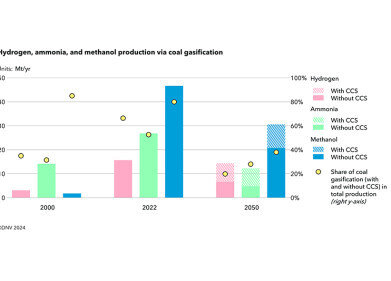Green Energy
How Does Web Design Impact Pollution?
Mar 28 2021
When most people think of carbon emissions, air pollution and climate change, they might not immediately consider how their internet browsing habits affect those issues. However, the rapid expansion of the internet as a carbon polluting industry means that it is likely to eclipse all other sectors within a matter of years, according to sustainably-minded web hosting provider GreenGeeks.
With that in mind, Italian design duo Fortafantasma have taken the unusual step of designing their entire website around environmental principles. That means they use basic typefaces, small images and only white or black colours for their pages. While visitors can choose to upgrade their experience and consume more energy in the process, the default web design is optimised to be as environmentally friendly as possible.
A growing polluter
The underlying structure of the internet is supported by data centres, which are home to millions of powerful servers that process the data involved in internet searches and websites. Those servers must be kept cool in order to avoid overheating, with 40% of all energy used to power the internet devoted to air conditioning of data centres.
In 2012, there were half a million data centres across the globe. In 2019, there were eight million such centres, while the number of them is only expected to grow as move further into an increasingly cybercentric future. At present, the internet is responsible for approximately 2% of all carbon emissions, which is the same percentage as the entire aviation industry. By 2040, it’s estimated to comprise 14% of all emissions worldwide.
That’s because these data centres – and indeed personal, commercial and industrial computers all over the world – draw their power from whichever grid is most convenient to them. While carbon capture and storage (CCS) technology is being developed to remove those emissions at source, there are still several teething problems with the hardware and very few carbon-emitting power stations employ the technique at the present time.
Cleaning up the worldwide web
With that in mind, GreenGeeks and Formafantasma are committed to making a difference. The former offers green web hosting services to its clients, among which the latter are numbered. In creating their site, the Italian designers commissioned web agency Studio Blanca to help them arrive at the most sustainable model possible.
The homepage is based upon the same template used by Wikipedia, while browsers can either choose from white font on a black background or vice versa. All images are smaller in size by default, requiring less energy to load them, though visitors can enlarge them if they wish to take a closer look. Meanwhile, the company’s logo was designed using Unicode symbols which can be viewed without having to download any image files.
The current health crisis facing the world has sparked an acceleration in the global digital transformation, with more and more businesses migrating their operations online. Indeed, one of the lesser publicised environmental implications of coronavirus could be an increase in emissions associated with the internet, given the increased amount of time we all spend online. As a result, any incremental gains made by energy-efficient web design should most certainly be welcomed the world over.
Events
May 05 2024 Seville, Spain
May 13 2024 Munich, Germany
May 23 2024 Beijing, China
May 23 2024 Beijing, China
Jun 10 2024 Algiers, Algeria














